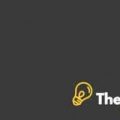Audit Case study Case Study Help
Introduction
Fabco is a private company started by Lenny Oliver in the year 1988 mainly manufacturing tanks for commercial and residential divisions. The company has grown significantly under the ownership of Lenny and he has been strong support for the progress of the company until last year. His health has been falling for the last year, therefore, he was unable to watch over his business effectively and died at the age of 75 years. His children were not interested to take over the business. Fabco has been operated by the team of board of directors established by Lenny a year ago.
The company has never had an audit under private ownership and it has shown declining profits for the last year. Therefore the board of directors has requested to audit the financial-statements that would help them for the assessment of overall financial risks that are present in the organization. Moreover, it is perceived that an analytical review of the financial-statements would be helpful to determine additional risks and prepare a plan for reducing the high risks posed by the the company.
Financial Analysis
Liquidity Analysis
Overall, Fabco's liquidity position appears to be relatively strong but could be improved by managing inventory levels more efficiently. The liquidity of Fabco Limited has decreased in 2022 compared to 2021 due to an increase in bank indebtedness.
Profitability Analysis
Fabco's profitability ratios are mixed. While the company has a healthy gross margin, its net profit margin is relatively low. This suggests that Fabco may be experiencing significant overhead costs that are impacting its bottom line.
Fabco may benefit from reviewing its cost structure to identify areas where it can reduce expenses and improve profitability. The profitability of Fabco Limited has decreased in 2022 compared to 2021 due to a decrease in sales, an increase in operating expenses, and an increase in interest expenses.
Efficiency Analysis
Fabco's efficiency ratios indicate that the company is performing well in terms of inventory turnover. This suggests that Fabco is effectively managing its inventory levels and is not holding excessive inventory. However, the receivables turnover ratio suggests that the company could improve its collection efforts and reduce the time it takes to gather payments from customers. The efficiency of Fabco Limited has decreased in 2022 compared to 2021 due to an increase in inventory and accounts receivable.
Solvency Analysis
The solvency ratios for Fabco are high. The ratio of debt to equity demonstrates that equity, as opposed to debt, is used more frequently to finance a company's activities. The company appears to be able to service its debt smoothly based on Fabco's interest coverage rate of 8. Due to Fabco Limited's significantly reduced capacity to cover the interest expenses out of operational revenue in 2022 relative to 2021, the company's solvency has worsened.
The above trends are related to each other as the decrease in sales has led to an increase in inventory, and the increase in operating expenses has led to an increase in accounts receivable. The increase in interest expense and the decrease in operating income have led to a decrease in profitability, which has further affected the solvency of the company. The increase in bank indebtedness has also led to a decrease in liquidity, which has affected the potential of the company to pay its current debt obligations. Overall, the trends indicate that Fabco Limited is facing financial difficulties and needs to take appropriate
Reasons for Fluctuations
Variations in Fabco's financial information could be caused by a variety of variables, including shifts in consumer demand, financial environment, competitiveness, and internal factors like poor management or ineffective operations. Yet, it is challenging to pinpoint the precise causes for the variations without additional specific information. A decrease in revenue or a rise in costs could be to blame for the drop in net income. A rise in debt or a decline in cash flow could be to blame for the rise in obligations.
A rise in output or a decline in sales could be to blame for the rise in inventory. The net decline in capital, plant, and technology may be the result of depreciation or the sale of assets. It is crucial to monitor changes in the financial statements to identify the strategic successes and failures of the company..............
Audit Case study Case Study Help
This is just a sample partial case solution. Please place the order on the website to order your own originally done case solution.













